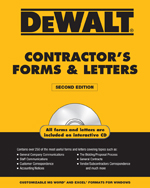So much change and yet so much remains the same. For years, the codes referred to this mystical product as the “weather” resistive barrier but the new I-Codes deemed it more appropriate to call it the “water” resistive barrier. The good news is that the acronym is the same and it remains the WRB in plans and specifications. Recent innovations also include new trowel or spray applied WRBs that are gaining in popularity. This editorial is not to promote or condemn paper, felt, housewraps or fluid applied WRBs as the more appropriate product; these are decisions by the architect and/or installer as to which is preferred for their particular project. I do believe that no single product is the answer to every scenario. The issue I have been tackling is the terminology or use of the phrases “primary” or “secondary” WRB.
I was shocked to have some technical experts within our own industry argue with me about the terminology of the WRB. I further found out that everyone has a different interpretation of what the WRB is as it relates to the phrase “primary” or “secondary.” I posted this question on the Walls and Ceilings Bulletin Board (www.i-boards.com/bnp/wc) to get a sense of what the guys in the trenches think. After enduring some attacks for wasting everyone’s time, I have come to some conclusions that I think are important to share.
The first issue is the “what-a-waste-of-time” scenario: Why is this important? Let’s just put the WRB up and just move on.
Oh, if life were that simple.
Not Like Yesteryear
It was simple a few decades ago. But today, litigation is on the front burner and those that do not pay attention to it will get burned. I learned the hard way in construction litigation: right does not make right in litigation. Almost all cases have lots of grey areas; not everything is black and white and covered implicitly by the code or a standard. That is when the experts step in and begin to pontificate their opinion and expertise. You have your expert and the other side has theirs.In the case of these grey areas, the mediator, arbitrator, judge or jury will often rely on one important factor: Who is the most believable expert? The fact that you have put on the product for 25 years, and used the “that’s the way I have always done it” statement carries very little weight in litigation. What does carry weight is your in-depth knowledge of the issue, understanding the controversy that may surround that particular issue, and your ability to back-up your statements.
Picture yourself in a jury box and imagine two experts giving testimony on a subject you know very little about. One expert says he knows the subject matter better than anyone else and states his case and although has very little to back up his bravado and claims, he is confident and unwilling to bend. The other expert gives a clear and easy to comprehend description, understands and acknowledges the controversy that exists and brings in various sources of information to back up his statements. Who do you believe? I can assure you, the second expert tends to win more often than not.
The WRB is one of the more controversial products in our industry. And that is the perfect sentence to explain if the WRB is the primary or secondary water barrier. We always have to start at the code as the beginning to prove or disprove a position. When it comes to the water resistive barrier, as per code, there is only one WRB. The WRB can be paper, felt, housewrap or a liquid applied but it is the one and only WRB as it is a product.
However, when we speak of managing moisture from a “system” perspective, there are various methods (i.e., barrier, concealed barrier and rainscreen). These are layers of defense to keep moisture out. In almost all exterior assemblies or systems, the WRB is the final barrier to keep liquid water out of the wall assembly. I have often referred to the building paper as the secondary WRB, which is technically incorrect. There is only one WRB but there are two lines of defense against moisture in most claddings over building paper, and as such, the WRB then becomes the secondary line of defense against liquid water.
While this seems like splitting hairs or arguing over semantics, this is what construction defect litigation is built on. Experts who understand this and can persuade the party responsible for passing judgment will typically prevail. As a manufacturer, dealer, contractor or even an expert witness, you have to know where the other side is coming from and where they plan to go. I have seen cases lost over a simple misunderstanding of terminology and an innocent contractor get shafted, and that’s why it is important to know this stuff.




Report Abusive Comment